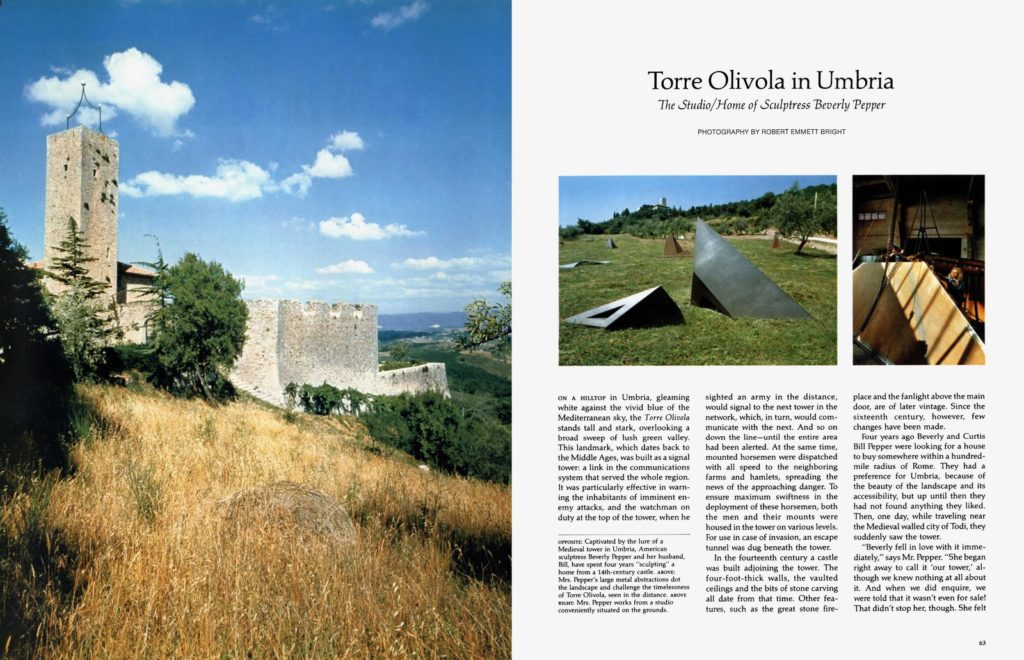The opening spread to Helen Barnes’s 1978 article.
Photographed by Robert Emmett Bright, Architectural Digest, October 1978
The Row is a label synonymous with minimalist, sculptural silhouettes. So it was fitting that the brand’s fall 2020 ready-to-wear show at New York Fashion Week yesterday featured the works of abstract sculptor Beverly Pepper. Suspended over models dressed in steely suiting options and part of Michael Bargo’s set was one undulating piece by Pepper—imposing not only for its artistic merit, but also for its sheer, intimidating weight. In other words, it was a total showstopper.
The nod to a female creative powerhouse was an appropriate one too, for a fashion brand famously founded and helmed by two women. It was also a choice with poignant timing, as Pepper died just last week at age 97 in her Italian home. The New York Times’s expansive obituary was brimming with fascinating details: Pepper began her career as a painter in Paris, studied at Le Cordon Bleu, and went on to publish numerous cookbooks to make ends meet—including for Glamour magazine. However, it was Pepper’s place of death that held particular meaning and significance within the context of her life and work, and was featured in the October 1978 issue of Architectural Digest.
“The whole of Torre Olivola is a sculpture,” Beverly Pepper said to Architectural Digest of her Umbrian home in the late 1970s.
Photographed by Robert Emmett Bright, Architectural Digest, October 1978
As writer Helen Barnes describes within her story, the medieval Umbrian Quattrocento home and studio of Pepper was in a sense another one of her sculptures. “Beverly was the sole architect,” her husband Curtis told the magazine at the time. And as the artist herself said, “The involvement with our house was mostly sculpturing the renovations. What I did was to cut out sustaining walls, replace arches, and give the same sense of space-experience to the house that I do to my sculpture.”
Despite these not insignificant changes, when it came to finding the Todi-set manse, it was love at first sight. “Beverly fell in love with it immediately,” Curtis Pepper, who handled the pool and landscape architecture of the property, reflected. “She began right away to call it ‘our tower,’ although we knew nothing at all about it. And when we did enquire, we were told that it wasn’t even for sale! That didn’t stop her, though. She felt that somehow it would belong to us.”






